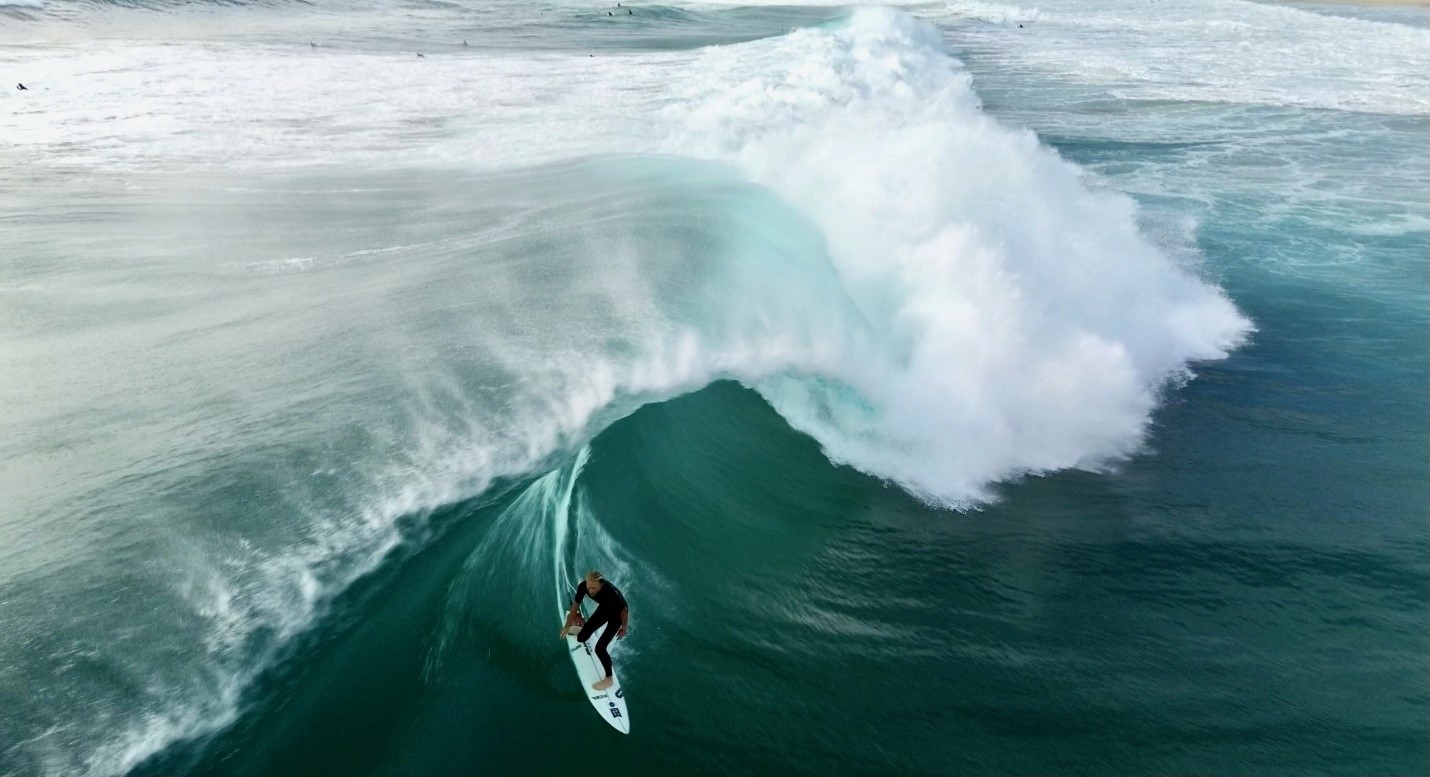Riding the Wave: Understanding and Managing Shoulder Instability in Surfers
By Orthopaedic Surgeon, Andrew McBride

In our quest to explore the intricacies of shoulder instability among surfers, we sat down with Dr. Andrew McBride, an orthopedic upper limb surgeon who not only treats a multitude of surfing athletes but also shares their passion as a surfer himself. With his unique perspective and expertise, Dr McBride sheds light on the common challenges faced by surfers and offers valuable insights into preventing, managing, and treating shoulder instability in this dynamic sport.
Understanding Shoulder Instability
Shoulder instability occurs when the structures that surround the shoulder joint—such as ligaments, tendons, and muscles—are unable to keep the head of the humerus (upper arm bone) within the shallow socket of the shoulder blade (glenoid). This can result in the shoulder feeling loose, slipping out of place partially (subluxation) or completely (dislocation), causing pain, weakness, and limited range of motion.
Why Surfers are Prone to Shoulder Instability
Surfing involves repetitive overhead motions, such as paddling and reaching for the wave, which can lead to overuse injuries and muscle imbalances around the shoulder joint. Dr McBride analysed professional surfing athletes on the World Championship Tour and found a 30% incidence of shoulder injury (1) . The forceful impact of waves, especially during wipeouts, can exert significant stress on the shoulders, increasing the risk of instability. Surfers may also experience shoulder instability due to previous injuries, anatomical variations, or inadequate warm-up and conditioning routines.
Symptoms of Shoulder Instability
- Feeling of looseness or instability in the shoulder
- Pain or discomfort, especially with overhead movements
- Recurrent shoulder dislocations or subluxations
- Weakness in the shoulder
- Limited range of motion
- Swelling or tenderness around the shoulder joint
When to Seek Help
If you experience any of the symptoms mentioned above, it's essential to seek medical evaluation from a qualified healthcare professional such as your GP or Physiotherapist. Additionally, if you've had a shoulder dislocation or subluxation, it's crucial to seek prompt medical attention to assess the extent of the injury and prevent further damage.
What to Do
Rest and Avoid Aggravating Activities: Take a break from surfing and any activities that exacerbate shoulder pain or instability.
Apply Ice: Applying ice to the shoulder for 15-20 minutes several times a day can help reduce pain and inflammation.
Immobilise the Shoulder: If you suspect a dislocation, immobilise the shoulder using a sling and seek medical attention immediately.
Treatment Options
Treatment for shoulder instability may vary depending on the severity of the injury and individual factors. Common treatment options include:
Physical Therapy: A structured rehabilitation program focusing on strengthening the muscles surrounding the shoulder joint and improving stability.
Activity Modification: Adjusting surfing techniques and avoiding activities that exacerbate shoulder instability.
Medication: Over-the-counter pain relievers and anti-inflammatory medications may help alleviate pain and inflammation.
Surgical Intervention: In cases where there is a structural lesion to the shoulder such as a labral tear or when there is recurrent dislocation of the shoulder, surgical procedures such as arthroscopic stabilization or open surgical repair may be necessary to restore stability to the shoulder joint.
Preventive Measures for Surfers
Strength and Conditioning: Incorporating exercises that target the muscles surrounding the shoulder joint, including the rotator cuff and scapular stabilizers, can help improve stability and reduce the risk of injury. Strengthening the subscapularis (rotator cuff muscle at the front of the shoulder) in an eccentric fashion is important for anterior instability whereas focusing rehabilitation of the teres minor and infraspinatus (rotator cuff at the back of the shoulder) is particularly important for posterior shoulder instability.
Flexibility and Mobility: Maintain good shoulder mobility and flexibility through stretching exercises for the chest, shoulders, and thoracic spine.
Proper Technique: Learn and practice proper surfing techniques to minimize excessive strain on the shoulders.
Warm-up and Cool-down: Perform a comprehensive warm-up routine before surfing and a cool down routine afterward to promote muscle recovery and flexibility.
Equipment Check: Ensure that your surfboard is the right size and weight for your body and consider using protective gear such as shoulder braces or neoprene sleeves for added support.
Conclusion
Shoulder instability is a common concern among surfers, but with proper understanding, preventive measures, and prompt treatment when needed, individuals can safeguard their shoulder health and continue riding the waves safely. By prioritising proper technique, conditioning, and injury prevention, surfers can enjoy their passion for surfing while minimizing the risk of shoulder instability and related injuries. So, embrace the waves, but also listen to your body and take the necessary steps to keep your shoulders strong and stable for years of surfing adventures ahead.
Reference
1. McBride A, Fisher, J, Shoulder injury in professional surfers. Abstract published Journal of Science and Medicine in Sport, Nov 2012

